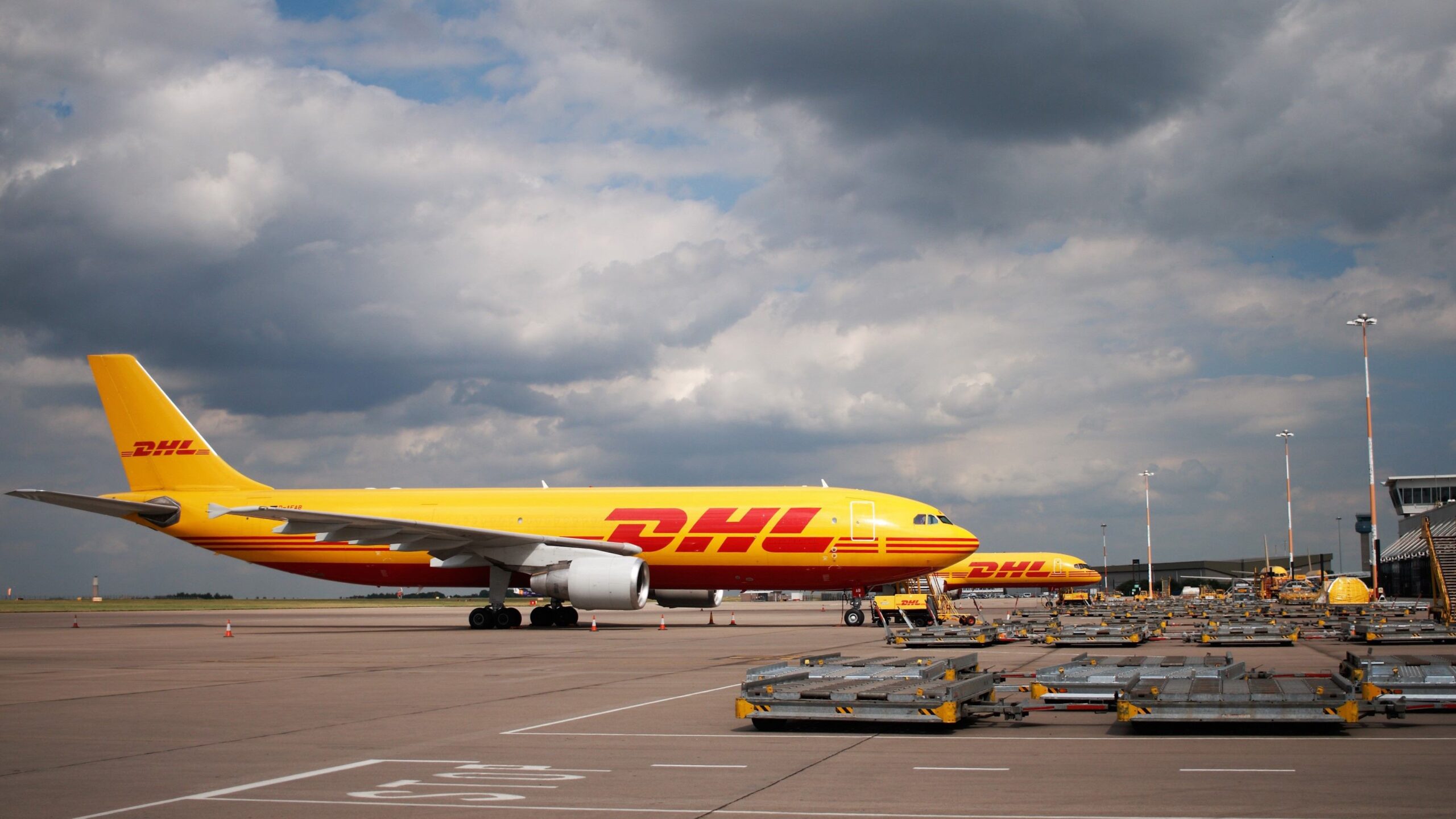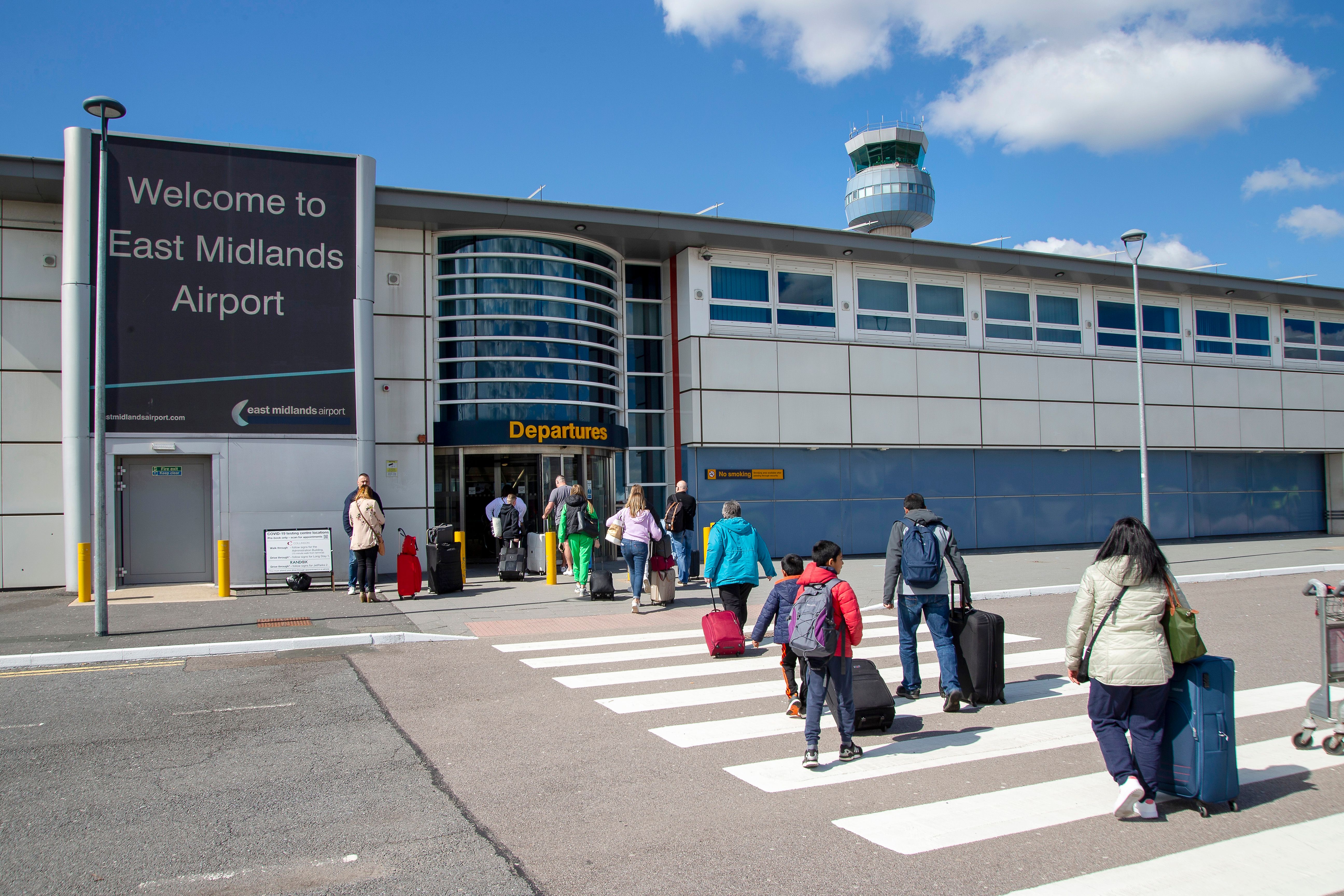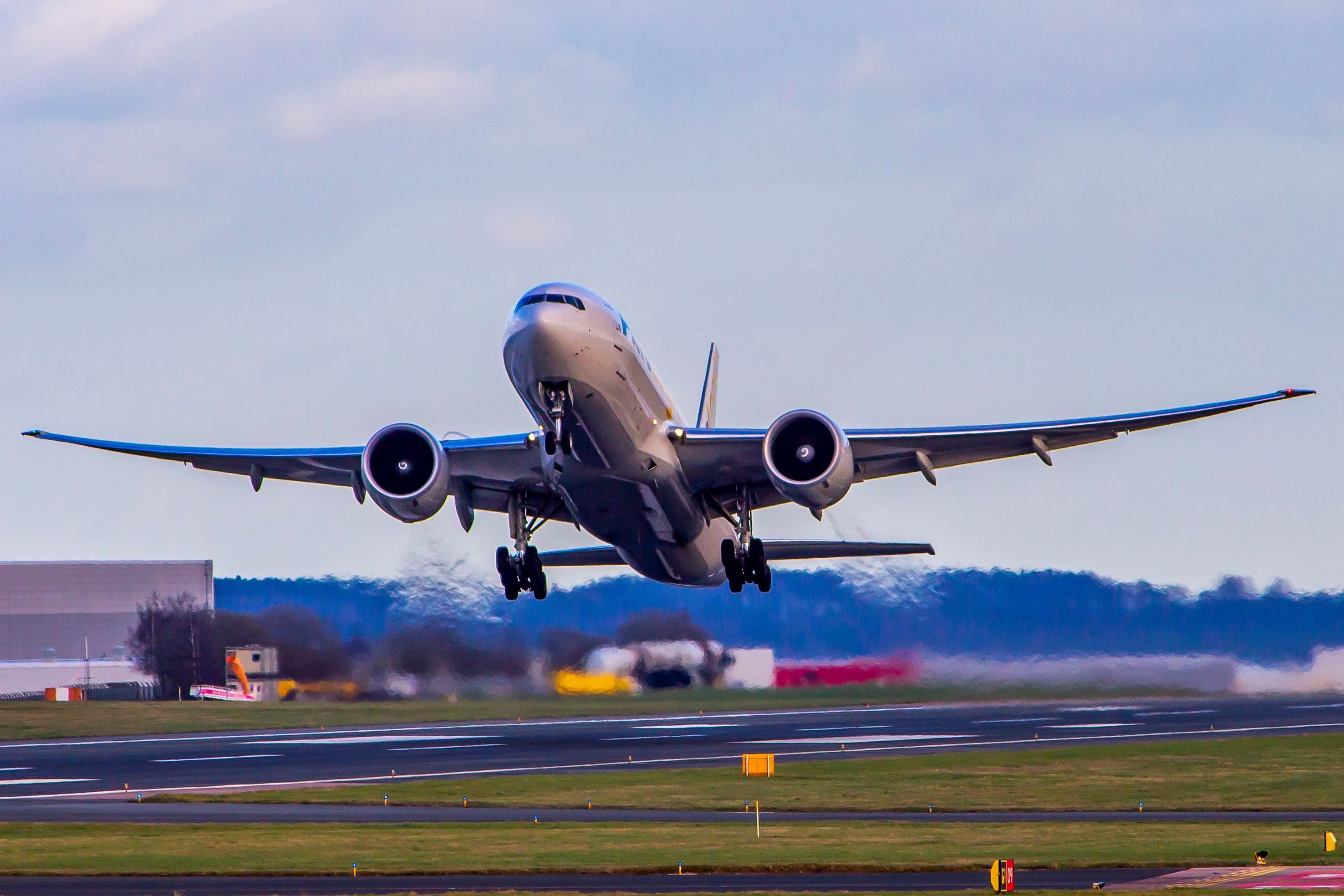When it comes to passenger traffic, East Midlands Airport (EMA) serves European destinations with low-cost and leisure carriers, while nearby Birmingham (BHX) is the Midlands’ hub for full-service and longer-haul traffic. As such, EMA ranks modestly among UK airports compared to its West Midlands rival, with CAA data showing that it ranks 14th in the UK by passenger traffic, compared to 7th for BHX.
However, one operational area in which East Midlands Airport can certainly be said to excel is in terms of airfreight and cargo traffic. But why does this small, low-cost and leisure-based airport attract so much airfreight? As it happens, while the connection may not seem obvious at first, there are several good reasons.
A brief history of East Midlands Airport
As its name suggests, the airport is situated close to the main population centers of the East Midlands such as Derby and Nottingham, with Leicester not far to the south. It began life in the Second World War as RAF Castle Donington, which opened in 1943. After three years of operations, this facility closed in 1946, a year after the major conflict ended, and the RAF base at the site was then decommissioned.
Photo: East Midlands Airport
According to EMA’s website, plans to revive the site as a commercial airport first arose in 1963, after the East Midlands Airport Joint Committee bought the site for £37,500 (£984,122 or $1,248,925 today). Planning permission was granted a year later, and, in 1965, it reopened as a commercial airport for passengers. The new airport also played host to British Midland’s head office until 1982.
East Midlands has undergone several different ownership changes in the 59 years since it first opened its doors to the region’s fare-paying passengers. The first of these took place in 1993, when National Express purchased the airport from the local authorities. Since 2001, it has been owned by Manchester Airports Group, and, last year, it handled almost 4 million passengers and over 66,000 aircraft movements.
An ideal, central location
While East Midlands is only the UK’s 14th-busiest commercial airport by passenger traffic, it ranks an impressive second when it comes to cargo. It only falls behind London Heathrow in this category, making it the UK’s busiest cargo hub located outside the capital. Its owner, Manchester Airports Group, adds that it is “the UK’s busiest ‘pure’ cargo airport,” which “supports a vibrant cargo logistics operation 24/7.”
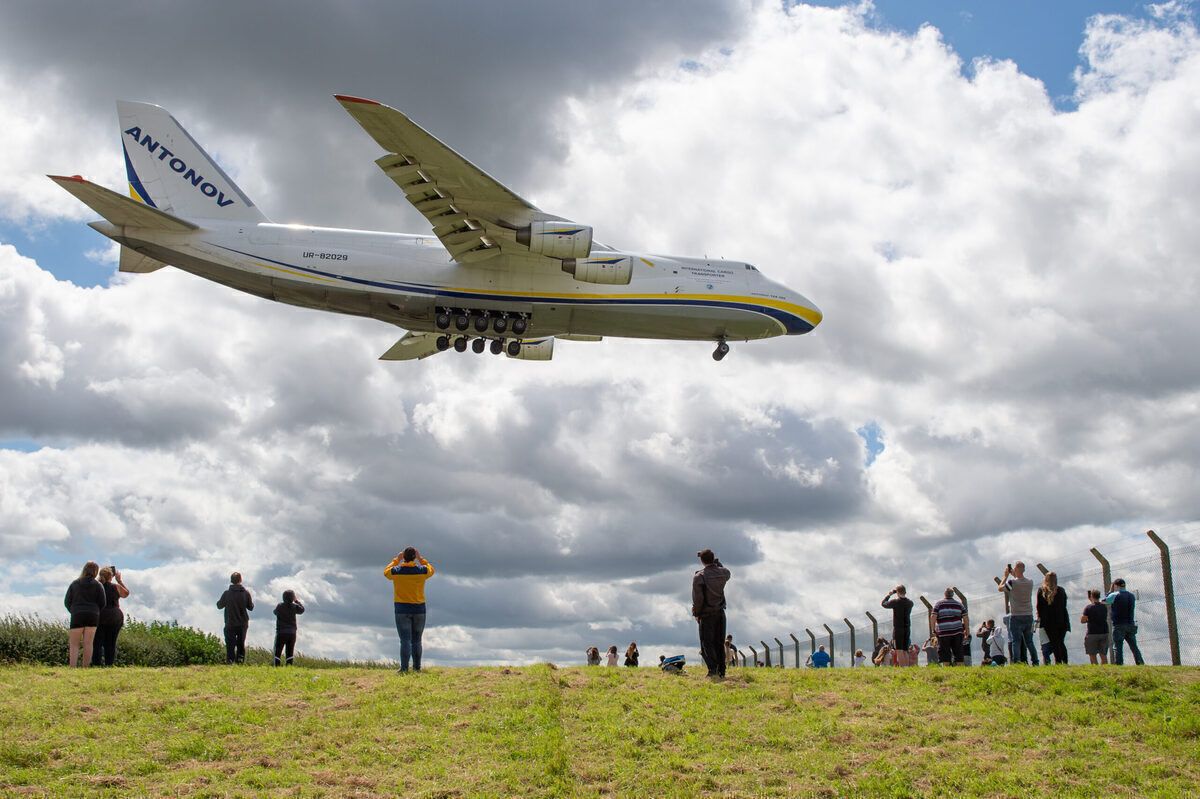
Related
East Midlands Airport – The UK’s Busiest Non-London Cargo Hub
The airport handles some 440,000 tonnes of cargo every year, and these goods can be flown into EMA on large aircraft like freight-configured Boeing 747s, owing to its 2,893-meter-long (9,492 feet) runway. Such aircraft can fly into East Midlands at all hours of the day and night, due to the facility’s not being restricted by slot regulations. There are also geographical benefits, as the airport’s website explains:
“Being only a four-hour truck drive to 90% of the population of England and Wales, EMA is perfectly positioned to ensure goods flown in and out of the country are with customers who need them most urgently.”
Which cargo carriers serve East Midlands?
All in all, a wide variety of airlines fly a wide variety of cargo in and out of East Midlands throughout the year. The airport itself notes that it “is a hub for DHL, UPS, FedEx and Royal Mail,” with these being amongst the leading cargo carriers in the UK, Europe, and indeed the world as a whole. UPS, in particular, invested £138 million ($175 million) into a brand-new cargo hub at East Midlands Airport in 2021.
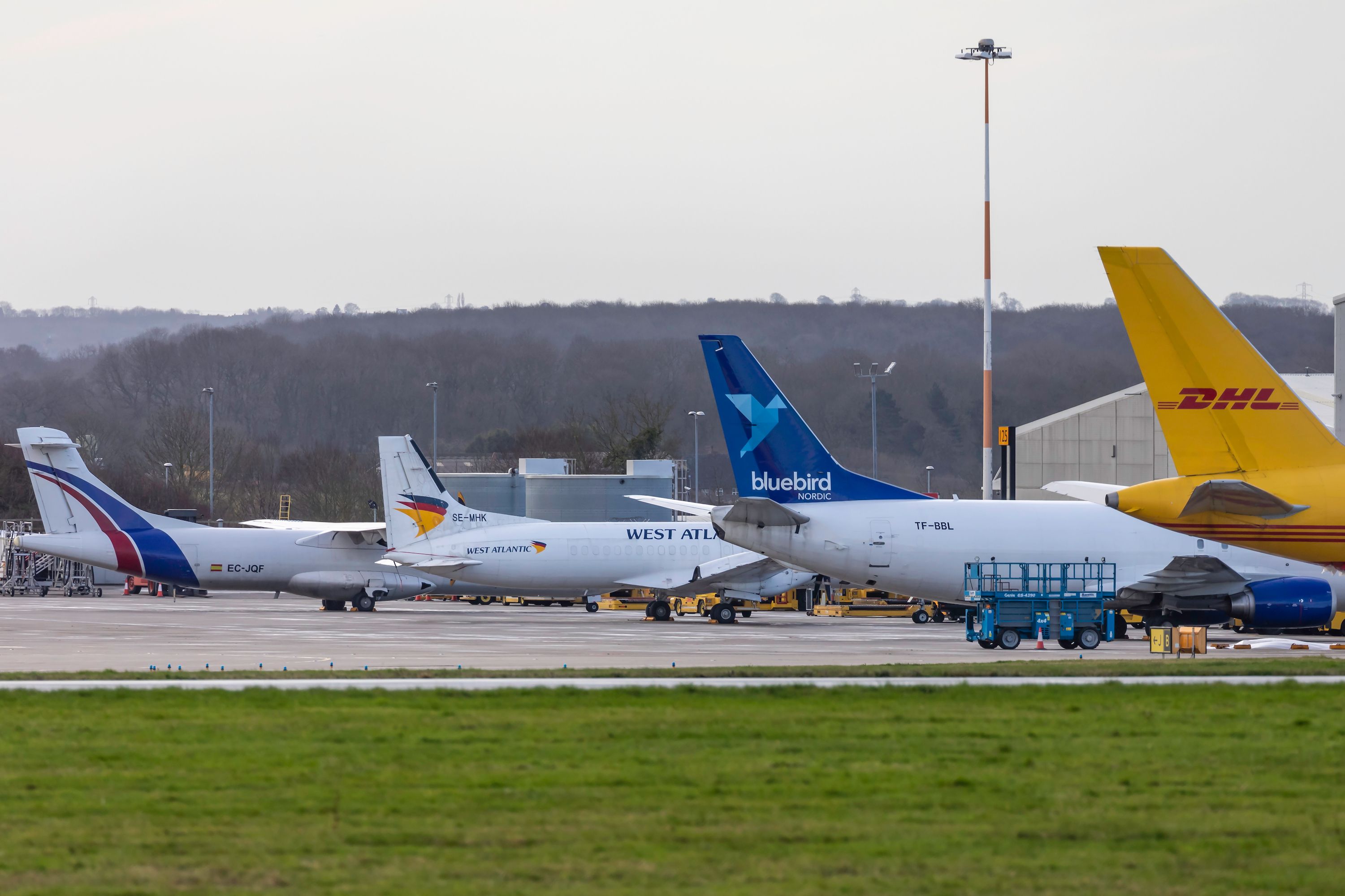
Related
UK’s East Midlands Airport To Undergo $150 Million Security Renovation
The renovation is expected to speed up security checks and improve passenger experience.
On a smaller scale, other European cargo specialist carriers such as AeroLogic (from Germany) and ASL Airlines France also have a presence at East Midlands Airport. Looking at present data from Flightradar24, we can additionally see that other airfreight operators including the likes of Cygnus Air, Maersk Air Cargo, MNG Airlines Silk Way West, and West Atlantic have come and gone in recent days.
The pandemic boosted the airport’s cargo operations
While the onset of the coronavirus pandemic in 2020 provided a plethora of challenges for the passenger sector of commercial aviation, cargo traffic actually boomed amid this adversity. Being an airport that handles a great deal of cargo anyway, this marked a surprisingly positive development for East Midlands, with the BBC reporting in 2022 that such traffic had increased by a factor of 23% since 2019.
Photo: BoeingMan777 | Shutterstock
Such a boom was even evident in the first few months of the recent global health crisis, with Air Cargo News reporting as early as April 2020 that cargo traffic was on the up at East Midlands Airport. The publication noted that cargo movements rose by around 10% a week in mid-March, and 7.4% a day towards the end of the month, with over 1,000 tonnes of airfreight being processed at the facility every day.
Passenger traffic snapshot
We’ll conclude by taking a brief look at the levels of passenger traffic that EMA is handling now that coronavirus has largely been consigned to the past. As mentioned earlier, the airport welcomed almost four million passengers in 2023, and data from Cirium, an aviation analytics company, shows that, this year, 4,761,690 seats are scheduled on flights to and from the airport. Its top three carriers by capacity will be:
- Ryanair – 10,704 flights offering 2,066,798 seats.
- Jet2 – 8,438 flights offering 1,594,782 seats.
- TUI – 4,564 flights offering 863,040 seats.
Did you know about East Midlands’ key role as a cargo hub? Have you ever flown to or from the airport as a passenger? Let us know your thoughts and experiences in the comments!

